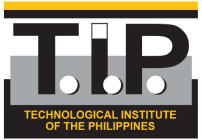

The Information Technology program is focused on the utilization of computers and computer software to plan, install, customize, operate, manage, administer and maintain information technology systems.
The program prepares students to be IT professionals who are well versed in application installation, operation, development, maintenance and administration; as well as familiar with hardware installation, operation, and maintenance.
Accredited by the Computing Accreditation Commission (CAC) of ABET, https://www.abet.org, under the commission’s General Criteria and Program Criteria for Information Technology and Similarly Named Computing Programs
Accredited by PCS Philippine Information and Computing Accreditation Board (PICAB)
Accredited by Seoul Accord
Recognition
From the ASEAN University Network-Quality Assurance (AUN-QA)
From CHED: Center of Excellence (COE) for Information Technology Education (ITE)
From PACUCOA: Level IV First Reaccredited Status in Information Technology
PROGRAM EDUCATIONAL OBJECTIVES
The Information Technology program has adopted the following educational objectives.
Three to five years after graduation, the Information Technology alumni shall:
- have advanced their practice or achievement in the field of Information Technology and/or other endeavors or advocacies supported by their acquired information technology education;
- be globally competitive through
- living by the TIP mission values, pursuing continuing education, and practicing continuous quality improvement in their personal lives;
- continuously scanning, adopting, and building on the best practices in their field.
STUDENT OUTCOMES
For students entering as freshmen for SY 2018-2019, the following SOs apply:
Student outcomes are outcomes (1) through (5) common to Computer Science (CS), Information Systems (IS), and Information Technology (IT). There are separate additional outcomes for CS, IS, and IT.
By the time of graduation, students will have the ability to:
1. analyze a complex computing problem and apply principles of computing and other relevant disciplines to identify solutions.
2. design, implement, and evaluate a computing-based solution to meet a given set of computing requirements in the context of the program’s discipline.
3. communicate effectively in a variety of professional contexts.
4. recognize professional responsibilities and make informed judgments in computing practice based on legal and ethical principles.
5. function effectively as a member or leader of a team engaged in activities appropriate to the program’s discipline.
6. identify and analyze user needs and to take them into account in the selection, creation, integration, evaluation, and administration of computing-based systems (IT).
For students entering as freshmen for SY 2021-2022, the following SOs apply:
Student outcomes are outcomes (1) through (5) common to Computer Science (CS), Information Systems (IS), and Information Technology (IT). There are separate additional outcomes for CS, IS, and IT.
By the time of graduation, students will have the ability to:
1. analyze a complex computing problem and apply principles of computing and other relevant disciplines to identify solutions.
2. design, implement, and evaluate a computing-based solution to meet a given set of computing requirements in the context of the program’s discipline.
3. communicate effectively in a variety of professional contexts.
4. recognize professional responsibilities and make informed judgments in computing practice based on legal and ethical principles.
5. function effectively as a member or leader of a team engaged in activities appropriate to the program’s discipline.
6. Use systemic approaches to select, develop, apply, integrate, and administer secure computing technologies to accomplish user goals. [IT]




